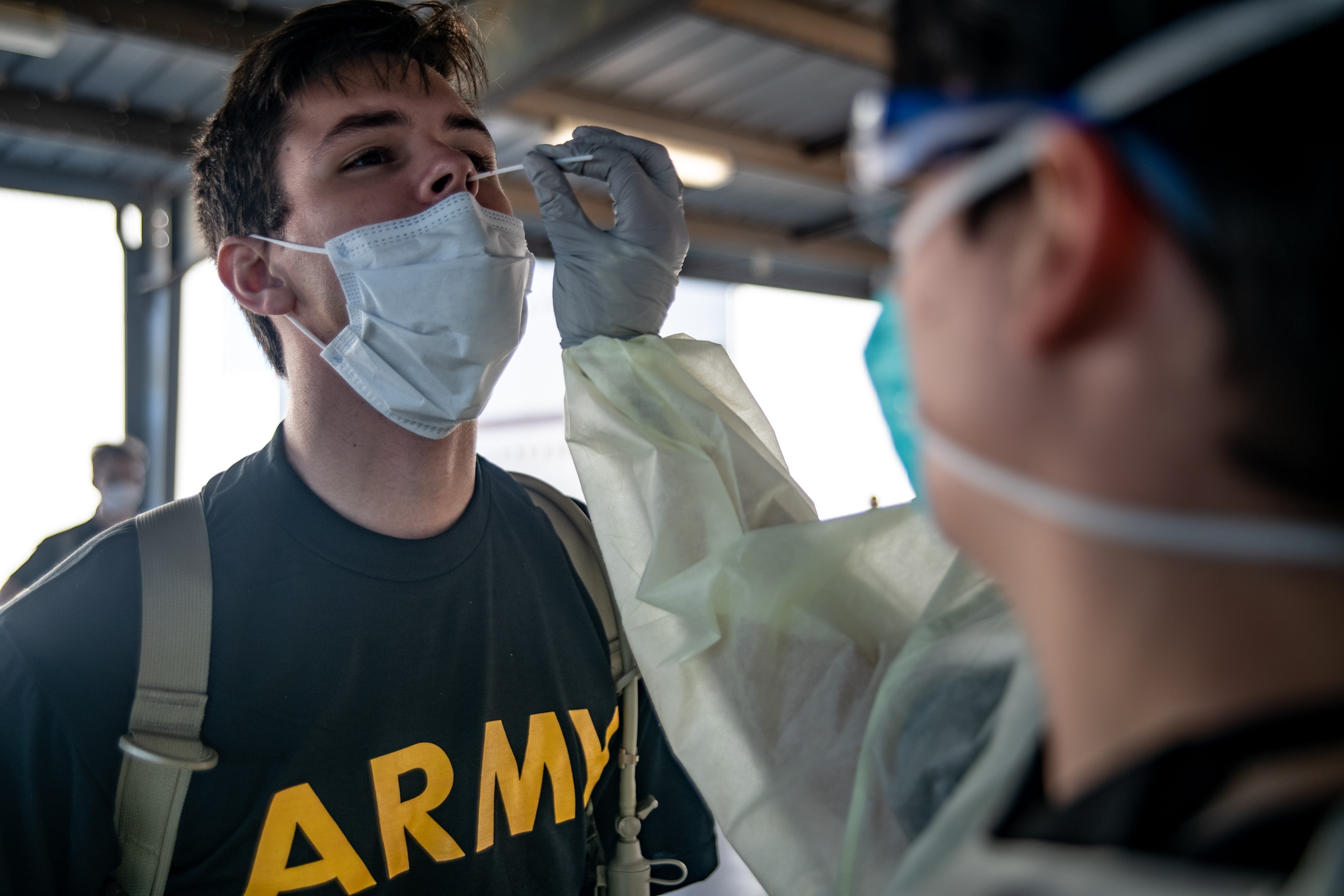More than 250 soldiers at Fort Leonard Wood will be the first to graduate from the Army’s controlled monitoring model of basic combat training.
Under this model, recruits are tested for COVID-19 upon arrival and monitored for symptoms for the first 21 days of training. During this time, a majority of the course’s academic instruction now takes place, enabling platoons to maintain separation from one another.
Drill sergeants live on base with trainees during these first three weeks to safely provide instruction on topics including customs and courtesies, nutrition, laws of land warfare, and wear and appearance of the uniform.
The 250 plus trainees in Alpha and Bravo Companies of 3rd Battalion, 10th Infantry Regiment, were the first to participate in the controlled monitoring model and will graduate July 9. An additional 150 or so soldiers from Delta Company are expected to graduate July 16.
No visitors are allowed, but graduation ceremonies will be broadcast live on companies’ Facebook pages.
Five drill sergeants lived on base to instruct Alpha Company trainees during the controlled monitoring phase. These drill sergeants said that quarantining provided a unique environment in which they could mentor and develop trainees.
Several soldiers spoke with Army Times.
“You could really see the difference in their reactions between different training styles,” Staff Sgt. Kari Dupuis said.
Pvt. Ebony Chambers, an Alpha Company trainee from Las Vegas, said, “The drill sergeants never failed to keep us informed or keep teaching us. They kept giving us classes and letting us know what to prepare for when red phase started.”
Planning for the controlled monitoring model was done on short notice. Army Lt. Col. Matthew Mason, 3rd Battalion, 10th Infantry Regiment, said the training cadre had about five days to plan before receiving new recruits. Command teams from across 3rd Battalion worked together to build courses of action for both best-case scenarios and scenarios in which additional supplies were not available.
The end result, Mason said, was an impressive display of “flexibility and adaptability.”
Recruits were transported via sterilized buses and administered testing immediately upon arrival. Following a one- to two-hour turnaround time, any recruits testing positive were quarantined in special barracks and monitored by health professionals for 14-21 days until they tested negative.
Those who tested negative were quarantined in barracks at the platoon level and received a health screening every morning of the 21-day controlled monitoring phase. All trainees and cadre members also followed social distancing guidelines and wore face masks throughout the controlled monitoring phase.
Capt. Kyle Palandech, Alpha Company commander, compared the controlled monitoring model to football spring training, saying, “The controlled monitoring was more of a coaching and mentoring phase. After the 21 days … that’s when the real season started.”
That “real season” was basic training’s red phase, in which trainees received tactical and physical training. That phase remained relatively unchanged, but trainees entered with a better idea of what to expect.
“We were lucky enough to have all this time to study, so we really know our information and are better soldiers because we had that time to get to know our stuff.” said Pvt. Megan Borth, who joined the Army hoping to one day become a drill sergeant herself.
Many trainees said their families were concerned about them attending basic training during the pandemic, but that cadre at Fort Leonard Wood were able to reassure families that their loved ones were in good hands.
“The tools that our cadre and command used through social media to connect us to our families and let them know the things that are implemented to protect us, it really took a lot of weight off their shoulders.” said Pfc. John Ellis, an Alpha Company trainee from Louisiana.
Chambers, a single mother of two, echoed this sentiment. “I definitely feel like they’ve done their due diligence with making sure we’re up to date and our families are up to date with what’s going on with us.”
Some even saw attending basic training during the pandemic as a great opportunity. Pfc. Brennen Stimpson, an ROTC cadet at Brigham Young University, said that after things began to shut down due to COVID-19, he was “excited to go to a place where he would continue to have a purpose.”
Mason emphasized the amount of planning and resources devoted to ensuring trainees’ safety, including the “world class medical care” offered by Fort Leonard Wood’s hospital.
“I think Fort Leonard Wood and the basic training environment is probably one of the safest places they’re going to find.”
Harm Venhuizen is an editorial intern at Military Times. He is studying political science and philosophy at Calvin University, where he's also in the Army ROTC program.




